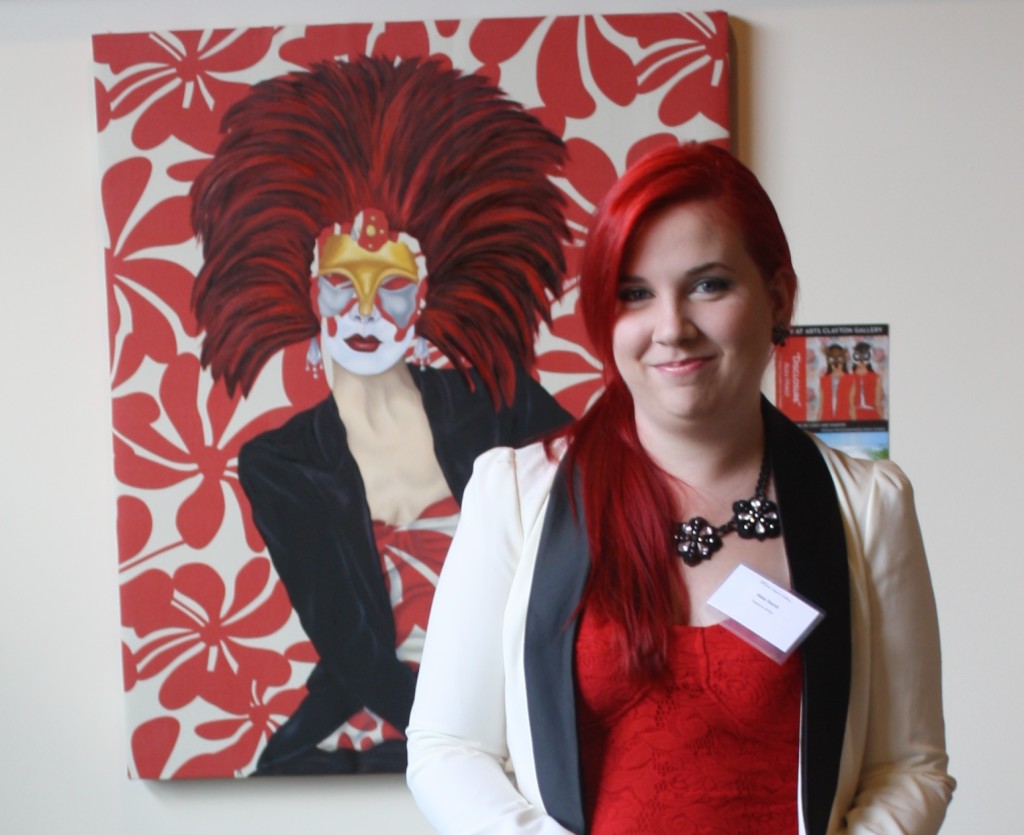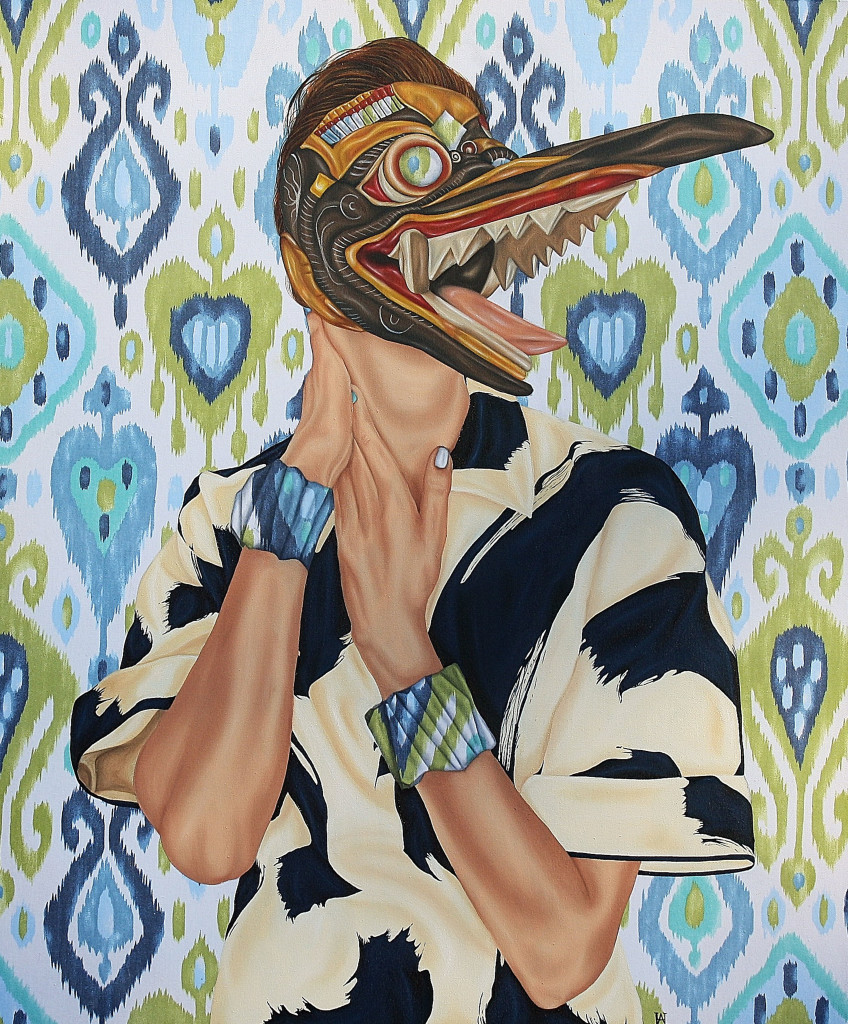 At the tender age of 25, visual artist Alea Hurst has accomplished so much that it’s entirely possible she’s superhuman. Her work is not just relegated to the walls of prestigious galleries (though it certainly has been shown in several), but it exists squarely in the eye of the general public—you can catch a glimpse of Hurst’s work nearly everywhere it seems, from the pages of numerous publications and beer bottle labels for Collective Arts Brewing to the faces of Modify Watches’ timepieces. In short: This girl is poised to take over the world.
At the tender age of 25, visual artist Alea Hurst has accomplished so much that it’s entirely possible she’s superhuman. Her work is not just relegated to the walls of prestigious galleries (though it certainly has been shown in several), but it exists squarely in the eye of the general public—you can catch a glimpse of Hurst’s work nearly everywhere it seems, from the pages of numerous publications and beer bottle labels for Collective Arts Brewing to the faces of Modify Watches’ timepieces. In short: This girl is poised to take over the world.
She draws, she paints, and her current “mask series” bends the traditional rules of painting through her use of fabric as a canvas for her oil paints. A self-described “quiet person,” she lets her art do the talking—and it certainly has much to share! Read on to find out how nightmares about her own work shaped her current series, what inspirational quote she has on her lock-screen to keep her motivated, and what this superwoman’s resolution is for 2016.
CommonCreativ: How did you first fall in love with drawing and painting?
Alea Hurst: For as long I can remember, I have been drawing and doodling on anything I could get my hands on. Around middle-school age, I began to take drawing a little more seriously, but had the idea I wanted to be a fashion designer. That was what ultimately set me on the path to becoming a visual artist. My freshman year of high school I took my first serious art class. I was lucky to have an amazing teacher who taught me a lot and showed me I had talent. I remember a lot of the students in my class had the same dream of being fashion designers and were a lot more talented at it than me. It was intimidating. I really wanted to do something different from everyone else. That is when I started thinking of being a visual artist instead. I really loved creating art and did not think of it as a career option until that point. From then on, my goal changed and being an artist has been my focus. I have not regretted that choice either. If anything, my need to create has only gotten stronger over the years. I am naturally a very quiet person and do not say very much, but with art you can communicate to the world without words or boundaries.
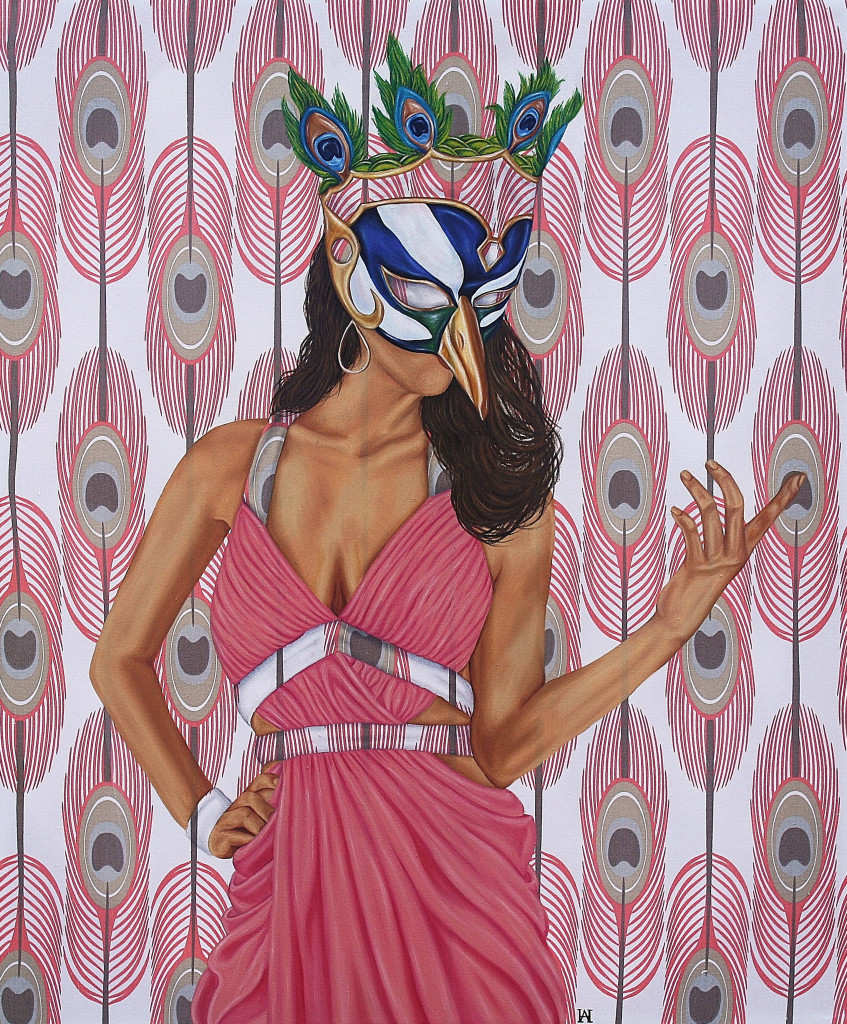 CC: How did you find your niche in art?
CC: How did you find your niche in art?
AH: My art has changed drastically, especially in the last couple of years. I used to be mainly interested in classical art and focused on painting still life with a landscape thrown in here and there. If you had said I would end up working with figures and masks on unconventional media, I would have said you were crazy. I avoided figures—now they are my focus. I guess a major part of being an artist is going with the flow and being able to reinvent yourself when things aren’t working out the way you want them to. It was time to make a change. With still life, I was playing it safe, but with my current work I am making more of a statement and taking greater risks. In a way, my work is mirroring my evolution as a person.
That said, my current mask series really happened as a result of multiple influences hitting me all at once during what I think of as a very unsuccessful series. I was originally painting a mask series but was using theater masks instead—you know, those plain white masks with exaggerated expressions. I personally was not happy with them and the feedback I was getting from my peers was not very positive. I knew I needed to change my direction. I became more interested in the decoration of cultural and tribal masks and also let my interest in fashion reemerge in my portraits. I was also taking an aqueous media class at the time working on a project with unconventional media and found objects. That made me think of painting on fabric. At the time, I didn’t know that this would be the series that I would stick with for years.
CC: What do the masks on each of your characters represent?
AH: Traditionally, a mask is worn to hide something. However, in my paintings, the mask reveals information instead of hiding it. The masks become representative of the characteristics of the wearer’s soul or personality. Each hints at some inner strength or flaw of the person being depicted, and the traits that were wished to be kept secret are now the focus of the portrait and revealed by the mask. Each mask is different in meaning. I try to research the original meaning of the mask in its culture to find the meaning for my painting, but sometimes, especially with animal masks, I use universal symbolism associated with it. The title for each painting hints at that meaning.
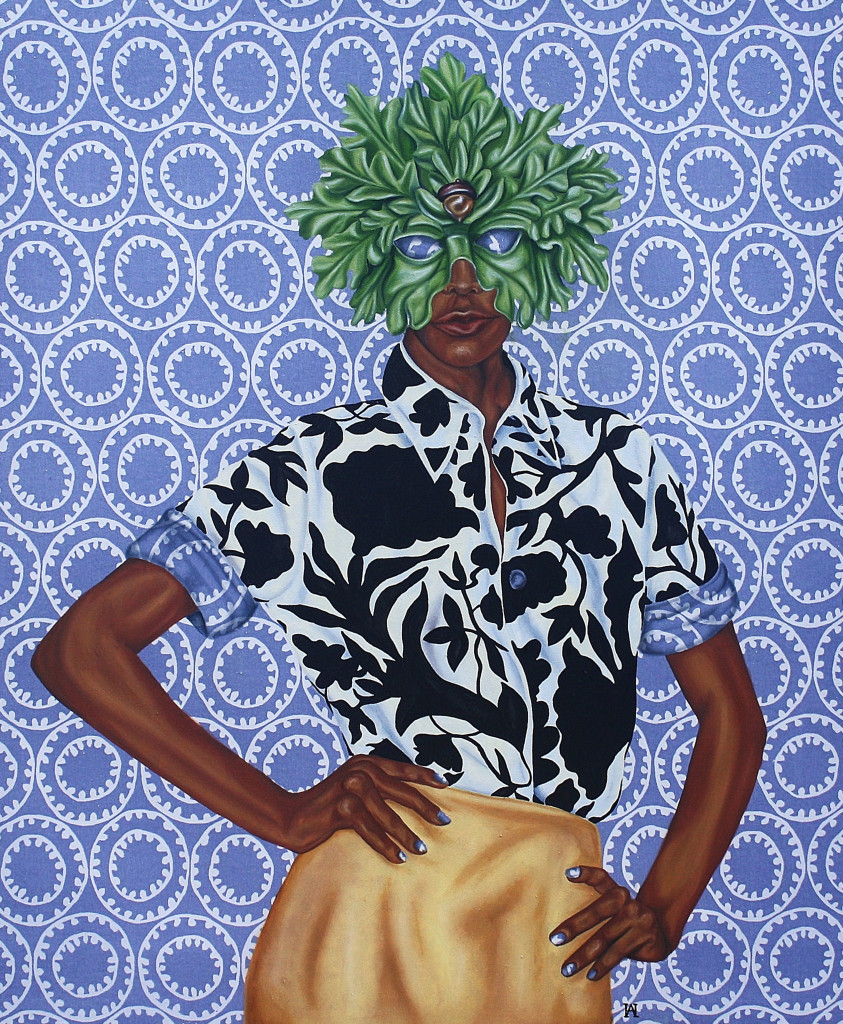 CC: Why don’t the characters have eyes behind the masks?
CC: Why don’t the characters have eyes behind the masks?
AH: I also draw influence from the fact that throughout the ages the eyes have been called the windows to the soul. Since I am dealing with the characteristics or archetypes of people’s souls, it is for this reason I always leave the eyes open to the fabric as if the viewer can peer straight into it. They are empty inside because their innermost being is on public display; there is nothing left to hide. I also want to leave enough room for interpretation by the viewer. They’re not meant to be portraits of specific people, but of types of people in general. I want them to be able to see themselves or someone they may know in them.
CC: You say the masks you paint tend to be representations from ancient cultures. Which culture do you most often pull from?
AH: I honestly try to pick masks from all cultures and not focus on any one culture more than others. I have been a little more drawn to Venetian masks in my previous work, because of the detail and adornment that tends to go with them. I have a lot of masks saved up for future paintings that branch into more cultures, but I have noticed that a lot of them are from East Asia. I find their masks fascinating because of their use of color and detail.
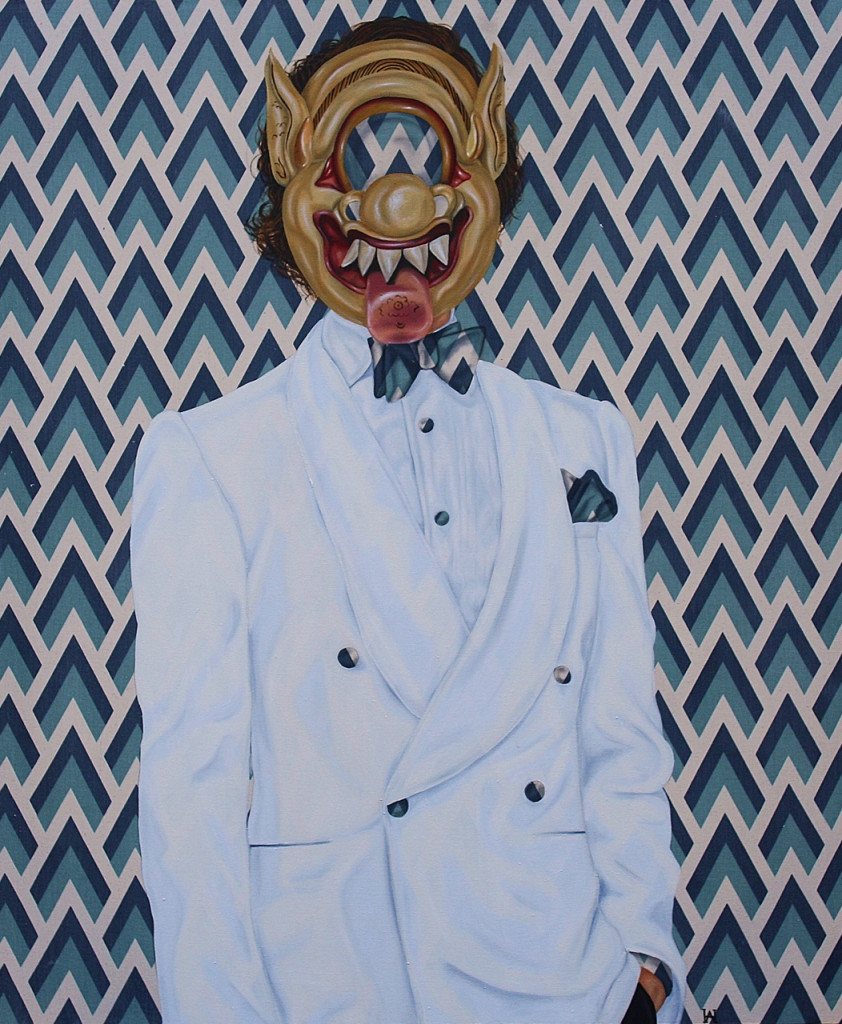 CC: Why is illusion so important to you in your paintings?
CC: Why is illusion so important to you in your paintings?
AH: I think it’s what sets me apart from other artists and also helps incorporate my use of fabric for the background. I love letting the fabric show through and become a part of the figure or clothing, especially in the tiny details. Sometimes you don’t notice it until you see it in person and even then some details take several views to notice. It’s always fun to listen to someone who is seeing my painting for the first time and their surprise to find the shirt or nails are the background showing through and not actually paint. I like that kind of involvement with the viewer where they get really drawn in by the details.
CC: How have you been so prolific in such a short time period?
AH: Focus. I tend to set a lot of goals for myself (sometimes a little overzealously) and then I just work towards them full-speed ahead. I completed a lot of work in undergrad, as well as, a lot on my own outside of that. There’s a lot more work than what I show on my website or exhibit, but some of that is probably better left unseen. I’ve grown a lot as an artist in the last few years and that’s a result of producing work constantly, even bad work, so I know what not to do in the future.
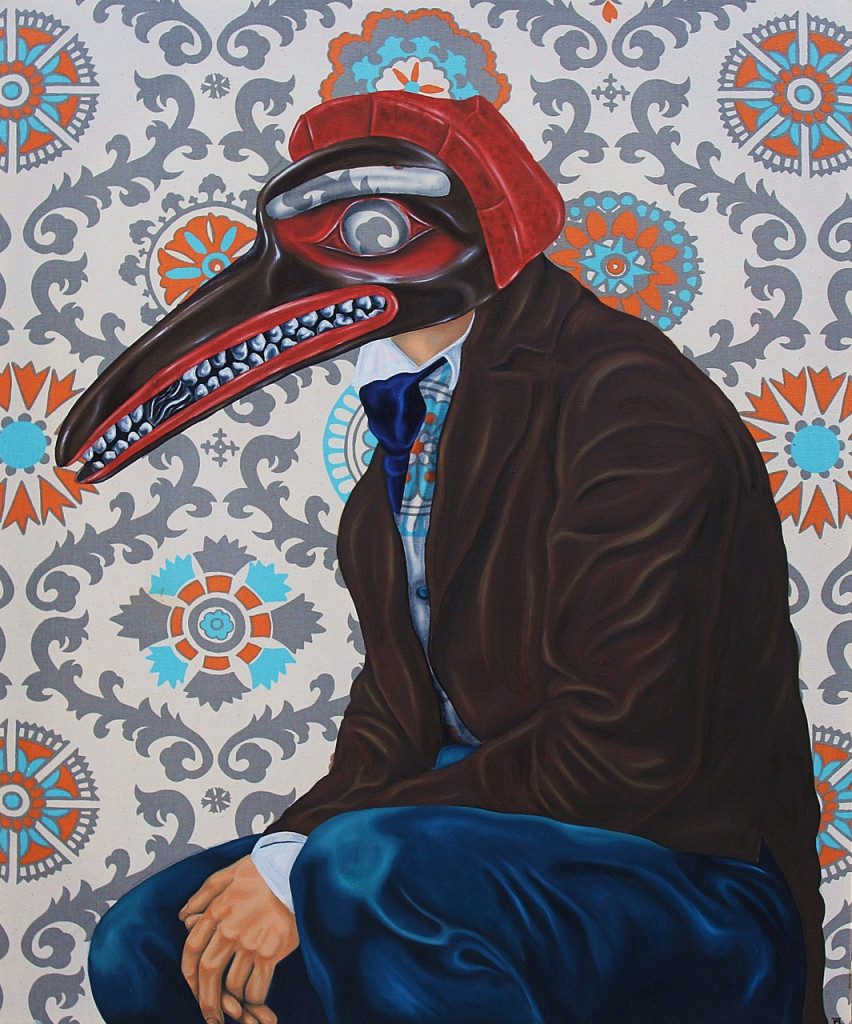 CC: How did you end up collaborating with Modify Watches?
CC: How did you end up collaborating with Modify Watches?
AH: I saw them collaborating with a lot of artists that I follow on social media and thought that it was a cool opportunity. At the time, they didn’t have an open submission policy like I think they do now and I couldn’t find anything about how they chose their artists on their website. So I asked and sent them some work samples. They loved the work and wanted to collaborate. I am a firm believer of the motto, “It doesn’t hurt to ask.” The worst that could happen is they say no or, more likely, you get no response at all. I even made my phone’s opening screen the quote, “Stop waiting for things to happen, go out and make them happen,” as a reminder to myself.
CC: How do you envision your work developing as you grow both as a person and artist?
AH: I’m leaving that open to see what the future holds. For now I’m experimenting with my mask series in both materials and concept to shake things up a little bit. I want to eventually try screenprinting or digitally printing my own fabric to use in my work. I also have some ideas floating around for a couple new series and drawings but haven’t committed to them yet. I never envisioned my work to be what it is now so I am open to whatever happens.
CC: What excites you most about Atlanta’s art scene?
AH: There is such a diverse range in both the people and the work being produced. It’s good for exposing yourself to new ideas and letting them possibly influence your work in a way you never thought of before. There’s a lot of opportunity to show work and connect with other artists and not just in traditional galleries but experimental spaces as well. I will admit I have not visited as many spaces as I probably should have, but that’s one of my resolutions this year, so I’m working on changing that.
CC: If there was one piece of local art you could own, what would it be and why?
AH: That is a really hard question. I like so many different pieces and different styles… So I guess after a lot of thought it would be something by Julianne Trew. I don’t have a specific one in mind because I would be happy with any of her paintings. I first saw her work when I interned for Mason Murer Fine Art and fell in love with them. I find them fascinating and get drawn in to them when I see them.
You can view more of Alea Hurst’s work on her portfolio or Instagram.

